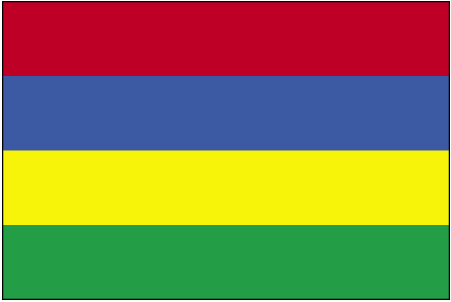

Main ¶ Country Introduction ¶ Country History ¶ Country ICT ¶ Country Maps ¶ Reference ¶
Inherited a low-income sugar plantation based economy at its independence in 1968; Mauritius had succeeded to make its economy the second most competitive economy in sub-Saharan Africa. Mauritiusís economy comes right after South-Africa, and is ranked as the 55th most competitive economy out the 139 countries report in by the Global Competitiveness Report of 2010-2011 (The World Economic Forum , 236-237). According to the same report, Mauritiusís GPD is $8.8 billion and its GPD per capita is $ 6, 838, which is the highest GDP per capita of all sub-Saharan African countries.
But now the question everyone would want to ask is how this country was able to achieve such an economic progress within few decades after its independence. In an effort to look for this answer myself during my research, I was able to identify few indispensable things, but not all that helped the country expand its economy. The primary reason for success is that Mauritians benefited from a stable democracy and government institutions that were responsible and less corrupt. The government institutions from the outset were able to maintain a stable macroeconomic environment by keeping inflation and government deficit at very low rates. A sound macroeconomic environment is a driver for business prosperity and competitiveness, because when a country pays very low-interest rate on its deficit, then the inflation on its economy is minimal, which is profitable to businesses. In addition, the government was able to build infrastructures such as roads, airports and ports, and as well as hospitals and schools that improved the health of the population and increased its literacy rate. The global competitiveness report of 2010-2011 classified the countryís institution soundness as 43rd, its infrastructure as 58th, its macroeconomic environment as 62nd, and its health and primary education as 59th out of the 139 countries reported (The World Economic Forum , 236-237).
Although the economy of Mauritius still relies on the sugar industry, it has been expanding into other industries such as textile and apparel, tourism, fish processing, hospitality and property building, banking and financial services, and as well as information and communication technology. Currently, the countryís main exports are sugar, textiles, fish, and its exporting partners are France, the United Kingdom, the United States, Belgium, Italy, Madagascar, and the United Emirate Arab (The World Factbook 2009. Washington, DC: Central Intelligence Agency, 2009.). Moreover, the other aforementioned industries such as tourism, hospitality, and financial services are booming. By 2008, this small island had become a an important touristic destination; it had more than 100 hotels, over 19 banks including many foreign banks such the British Colonial bank HSBC, and had introduced Islamic banking, which had been bringing important investments from the Arab Gulf states (The Economist). However, with the countryís diversifying economy, it still relies heavily on imports as well. It imports mostly foodstuff, manufactured good, petroleum products, chemicals, and capital equipments according to the CIA fact book on the country.
The economy of Mauritius is categorized as an efficiency driven economy in the Global Competitiveness Report of this year, which puts it one step behind of becoming an innovative economy like the developed nations. Mauritian economy has grown tremendously over the last four decades as it helped maintain a low employment rate, increase the GPD growth rate, keep low inflation rate, and spread income distribution throughout its diverse ethnical society due mostly to its ambitious and responsible government. For example, unemployment rate was at 7.3%, GDP growth rate at 3.1%, and inflation rate at 2.5% in 2009 according to CIA fact book of the country.
Main ¶ Country Introduction ¶ Country History ¶ Country ICT ¶ Country Maps · Reference ¶